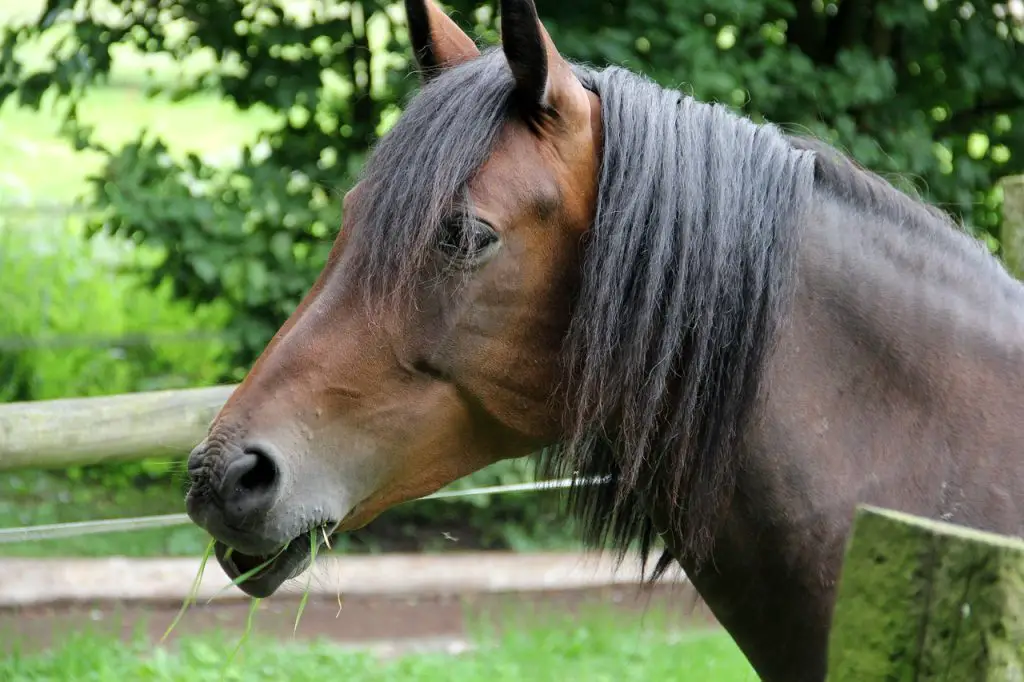Last Updated on March 11, 2022 by Allison Price
About the Breed
Warmblood horses such as the Hanoverian horse are bred to excel at the equestrian disciplines, including dressage, eventing, jumping and driving. In northern Germany, the breed was born in Lower Saxony, a former kingdom of Hanover. There has been a flourishing horse breeding industry for over 400 years. Celle was the first location of the State Stud, while the Hanoverian Studbook was founded in 1888.
To improve the horse’s ability to perform in cavalry or farming, Thoroughbreds were used as stallions. Over the years, the Hanoverian breeding program has evolved to meet the demand for an athletic riding horse and introduced other breeds when necessary. This is how we have the modern Hanoverian horse.
This breed still has the same bone structure, strength and endurance as its heritage. The Hanoverian was originally bred nearly 300 years ago to be a sturdy carriage horse and military horse. The breeding goal was to create a versatile performance horse since the end of World War II. The breeding stock is selected to ensure correct conformation, athletic ability, and inner qualities like disposition and trainability. The Hanoverian is characterized by natural impulsion, light and elastic gaits, and a walking style that covers ground, has a floating trot, and a rhythmic canter. This breeding program has been successful in competition with 13 medals at the 1992 Olympics, four consecutive World Breeding Championships and five gold, one and two silver medals respectively in dressage and show jumping at 1996 Olympics.

Breed CharacteristicsQuality performance prospects are the result of the Hanoverian selection process. The American Hanoverian Society organises a national inspection tour each year to inspect foals, license stallions and perform performance tests on mares. AHS approval is required for both sire and dam to register a foal. American and German inspectors assess mares on their type, conformation, and gaits. The Mare Performance Test measures a mare’s ability to ride, jump and perform well in the saddle. Based on their overall score and the Studbook placement of their dam, mares are placed in different sections of Studbook. After passing the Mare Performance Test, the Elite Mare title can be earned by the most outstanding mares.
All potential stallion candidates must present for inspection. A temporary breeding license will be granted if the scores for conformation, movement, and jumping ability are satisfactory. Stallion performance tests must be completed within two years. This test evaluates gaits and trainability, and assesses athletic ability in dressage and show jumping. Each year, eligibility for breeding is checked.
Non-Hanoverian mares or stallions may be eligible for inspection and entry to the Studbook, provided they meet strict breed and pedigree requirements as well as receive sufficient scores upon presentation. A horse that has only one AHS approved parent (either Main Studbook dam, Elite Stallion sire), is eligible to receive a Certificate of Perdigree. This allows them to participate in the AHS Awards Program.
Selection Criteria
Masculinity/Femininity and Typiness
Stallions should have a masculine appearance, while mares must have a feminine one. The Society’s breeding goals must be reflected in the horse’s type.
Conformation
The body’s main parts, from the chest to your buttocks, should be able to fit in a rectangular frame (not square), with all parts harmoniously integrated. A well-dressed neck and a well-shaped head are also desirable. A sloping shoulder with the angle between the scapula, humerus and scapula large and open; a long forearm with a short cannon bone and straight legs; withers that are prominent and extended far back. A strong but not too tight back is preferred. Attention must be paid to the hindquarters, including their proportion and joint structure. The hocks should be wide, clear, and well defined. All four legs’ pasterns must have a proper slope and length. And the hooves must be strong, well-shaped, and sound.
Gaits
The movement as seen from the front or rear must be straight and free of paddling, winging, or crossing.
Elasticity and impulsion
The impulsion must be clearly from the hindquarters and travel through a relaxed back, moving in rhythm with the gait. The movements should be large, but light and springy.
Walk
Walking must be smooth, regular, and cover all ground. The steps must be straight and the footfalls should be in the correct order. It must be obvious that shoulders, hips and back are free and unrestrained.
Overall Impression and Development
Sound judgment should be used when deciding on the size of a horse. Horses shouldn’t be too big or too small. The overall build should reflect the horse’s height. Harmony is more important that size. Horses must develop in a way that is compatible with their age.
The American Hanoverian Society Corporate Bylaws & Rules of Registration.
Breed Organizations
American Hanoverians were discovered to be athletic and agile and American competitors started to import them. The need was then for the United States to maintain the German standard of breed selection. The American Hanoverian Society was established in 1978. The Society has been closely associated with the German Hanoverian Verband (the Verband hannoverscher Warmblutzuechter) over the years. They have worked together to inspect breeding stock, register horses, and license and test stallions. The AHS took over full responsibility for the breeding of Hanoverians in this nation in 1995. In order to maintain continuity, representatives from the VhW are invited by the AHS to judge breeding stock during the annual inspection tour. They also attend the annual business meeting.



